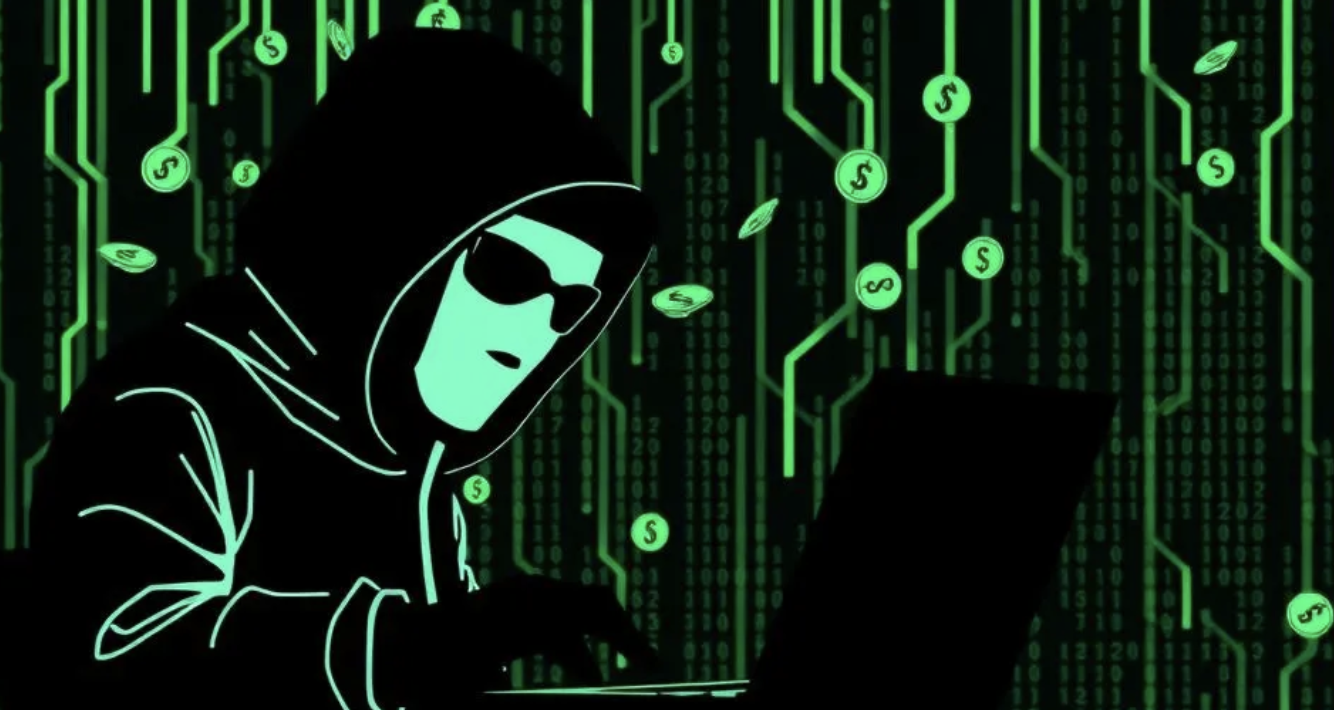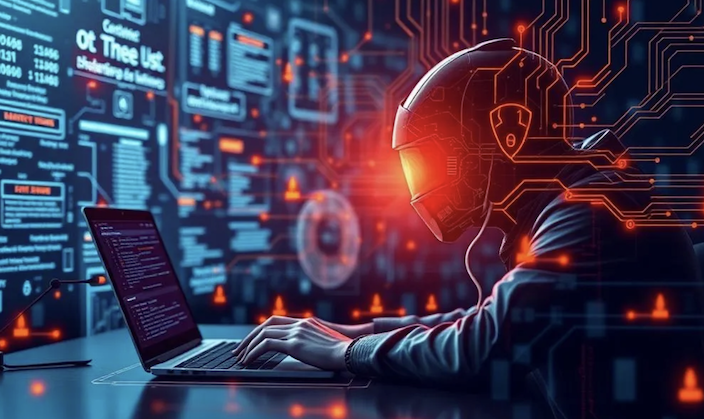The Digital Dream and the Persistent Shadow of Deception
In today’s world, we live so much of our lives online—shopping, banking, chatting with friends—that it’s easy to forget there are dangers lurking in the digital world. Scammers and hackers are always looking for ways to trick people, and phishing scams are one of their favorite tricks. Ever gotten an email that looks like it’s from the FBI? Or a text saying your bank account is in trouble? These messages might seem urgent, but they’re often scams designed to steal your personal information. This guide will help you understand what phishing is, how to spot these scams, and how to protect yourself. With the right knowledge, you can stay safe online and keep your personal information out of the wrong hands.

Understanding Phishing: The Three Pillars of Deception – Psychology, Technology, and Money
How Scammers Manipulate the Mind: The Hidden Tricks of Phishing
Phishing isn’t just about fake emails and websites—it’s a psychological game designed to trick people into giving away personal information. Scammers know exactly how to exploit human nature, and they use these common tactics:
- The “Illusory Truth Effect” – If you hear something enough times, you start to believe it—even if it’s false. That’s why scammers repeat the same lies over and over in emails, messages, and phone calls.
- The “Ben Franklin Effect” – If someone does a small favor for you, they’re more likely to do a bigger one later. Scammers use this by asking for tiny bits of information first, slowly pulling victims into bigger scams.
- The “Reactance Theory” – Ever wanted to do something more just because someone told you not to? Scammers use reverse psychology to spark curiosity and get people to click dangerous links.
- The “Narrative Fallacy” – People love a good story. Scammers create emotional and believable tales—like a bank emergency or a relative in trouble—to make their lies seem real.
Understanding these tricks is the first step in protecting yourself. The next time you get an unexpected email, text, or call, pause and think—are they playing mind games with you?
The Cybercrime Underworld: How Hackers Make Money and Stay Hidden

Cybercrime isn’t just a few hackers working alone—it’s a massive, global network built on deception and profit. Criminals use advanced tools, secret marketplaces, and even financial loopholes to make money and stay ahead of law enforcement. Here’s how they do it: Hackers don’t just sell stolen data; they also sell malware kits, phishing tools, and even “how-to” guides for cybercrime. Anyone with bad intentions (and the right amount of money) can buy what they need. Criminals use unregulated crypto platforms to hide and move stolen money, making it harder for authorities to track. Countries are using phishing and hacking to spy on each other, steal secrets, and even sabotage critical infrastructure. Some criminals attack companies and then file fake insurance claims, pretending to be victims so they can collect payouts. The cybercrime world is constantly evolving, but understanding how it works is the first step in staying protected.
Advanced Phishing Detection: A Deep Dive into Cybersecurity Tactics
As phishing attacks grow more advanced, so do the methods to detect and stop them. Cybersecurity experts use forensic techniques to uncover hidden threats and analyze digital clues. Here’s how they do it:
1. Email Header Analysis: Tracing Digital Fingerprints – Hackers often disguise emails to look legitimate, but email headers can expose them.
- Check “X-Received-SPF” and “X-Authentication-Results” – These show if an email was sent from an authorized server or if it was spoofed.
- Look at “Content-Type” and “Content-Transfer-Encoding” – These can reveal suspicious attachments or hidden malware.
- Use network traffic analysis tools – Capturing raw email traffic can help detect unusual patterns or hidden threats.
2. URL Inspection: Unmasking Malicious Links – Phishers use tricks to hide dangerous links, but analyzing them can reveal their true nature.
- Use browser developer tools to inspect website JavaScript for hidden malware or data theft.
- Analyze URL obfuscation – Hackers disguise URLs using redirections and encoding to fool users.
- Check domain reputation – Online tools can reveal if a link is associated with scams.
3. Digital Signatures & Encryption: Verifying Authenticity – Secure websites and emails use cryptographic certificates, but attackers try to bypass them.
- Check SSL/TLS certificates using tools like OpenSSL or Wireshark to detect weak encryption.
- Watch for certificate revocation lists (CRLs) and OCSP checks – Expired or fake certificates are red flags.
- Understand post-quantum cryptography – Future threats may exploit outdated encryption.
4. Behavioral Analysis: Spotting the Unusual – Hackers often pretend to be someone they’re not, but subtle details can expose them.
- Analyze sender behavior – Look at email patterns, writing style, and online activity for inconsistencies.
- Check embedded media – Hidden tracking pixels, scripts, or modified images may indicate phishing.
- Detect fingerprinting attempts – Attackers use device/browser data to track and exploit users.
5. Attachment Analysis: Investigating Hidden Threats – Some phishing emails carry dangerous attachments that install malware when opened.
- Use reverse-engineering tools (IDA Pro, Ghidra, Cuckoo Sandbox) to analyze suspicious files.
- Extract and inspect macros/scripts (olevba, CyberChef, ViperMonkey) – Malicious code often hides in document files.
- Understand fileless malware and memory injection – These advanced techniques avoid traditional antivirus detection.
Building a Strong Defense: Ways to Protect Yourself Online

The internet is full of risks, from bad actors trying to steal your passwords to scam emails that trick people into giving away personal information. Protecting yourself online doesn’t have to be complicated. Here’s a few tips on how you can stay safe.
Passwords: The First Line of Defense
- Instead of using regular passwords, try passwordless logins like fingerprint scans, face recognition, or security keys (like the ones used for banking apps). Use a password manager—it creates and remembers strong passwords for you, so you don’t have to. Protect your important information by storing it securely with hardware security tools that keep hackers out.
Email Security: Stopping Scams Before They Reach You
- Hackers send fake emails that look real. Use email filters that block dangerous messages before you see them. Be careful with attachments—even if an email looks safe, a file inside could be a virus. Never click links in emails unless you’re 100% sure they’re safe. Some links pretend to be from banks or companies but actually steal your information.
Keeping Your Wi-Fi and Internet Secure
- Use a secure internet connection at home. Public Wi-Fi is risky because hackers can easily steal data. Set up firewalls and security systems on your devices to block suspicious connections. Update your software regularly—hackers love to break into outdated systems.
Protecting Your Phone and Computer
- Install security software that can spot and remove viruses. Limit what programs and apps can do on your device. If an app asks for too many permissions, don’t trust it. Use firewalls and trusted programs to prevent dangerous software from running.
Learn How to Spot Scams
- Scammers trick people by pretending to be someone you trust. If you get a message from your bank or a company, double-check by calling them directly. Think before you click—if something seems too good to be true, it probably is. Report suspicious messages—don’t just ignore them. Reporting helps protect others too.
Backing Up Your Important Files
- Keep copies of your important files in different places (like an external hard drive or a cloud service). If a virus locks your files, you won’t lose everything. Make sure backups are protected with passwords so no one else can access them. Use encryption to keep your private data safe—this scrambles your files so only you can read them.
The Future of Cyber Threats: What’s Coming and How to Prepare

The digital world is changing fast, and so are the tricks hackers use. Future threats are becoming smarter, harder to detect, and more dangerous. Here’s what’s coming and how to protect yourself.
1. AI is Making Scams More Convincing
Hackers are using Artificial Intelligence (AI) to trick people more easily. AI can fake voices, emails, and even video messages to make scams more believable. Some scams use AI to pretend to be family members, bosses, or customer service reps to steal money or personal info. How to stay safe: Always double-check unexpected calls, emails, or messages—even if they sound real. If someone asks for money or sensitive info, call them back using a known number.
2. The Threat of Quantum Computing
Right now, encryption (which protects passwords and sensitive data) is almost impossible to break—but quantum computers could change that. Quantum computers are much faster than today’s computers and could crack passwords and security codes in seconds. How to stay safe: Tech companies are developing quantum-proof security, so always update your software and follow cybersecurity news.
3. The Dangers of the Metaverse and Virtual Reality (VR)
The metaverse (virtual online worlds) and VR technology bring new risks like identity theft, fake businesses, and cyberbullying. Hackers can create fake VR environments to trick people into sharing private information. How to stay safe: Be careful where you enter personal details and don’t trust everything you see in virtual spaces.
4. Attacks on Power Grids, Factories, and Critical Systems
Hackers are targeting industrial systems that control things like electricity, water, and transportation. Many of these systems use old, outdated technology, making them easy targets. How to stay safe: If you work in industries that use critical infrastructure, advocate for better security measures and stay informed on risks.
5. Hackers Using AI to Find Weak Spots Faster
Cyber-criminals are using AI to scan websites and systems for security holes automatically. This means attacks are getting more frequent and harder to stop. How to stay safe: Companies must invest in AI-powered security tools to fight AI-driven attacks.
6. Deepfakes Are Becoming Easier to Create
Deepfakes are fake videos, audio, or images that look completely real. “Deepfake-as-a-service” websites now let anyone make a convincing fake for scams or misinformation. How to stay safe: Be skeptical of videos and audio that seem suspicious—especially if they ask for money or sensitive information.
7. Fake Identities Are Being Used for Fraud
Criminals are using “synthetic identity fraud”—creating fake names, credit profiles, and bank accounts to scam businesses. These fake identities make it harder to catch criminals since they don’t exist in real life. How to stay safe: Businesses should use advanced identity verification tools, and individuals should monitor their credit reports for any unusual activity.
8. Hackers Are Using “Island Hopping” Attacks
Instead of going after big, well-secured companies, hackers first attack smaller, weaker businesses that work with them. By hacking a small vendor, they can sneak into a bigger company’s system. How to stay safe: Small businesses need strong cybersecurity too. If you work with vendors, make sure they follow security best practices. Cyber threats are getting more advanced, but staying safe doesn’t require being a tech expert. Simple steps like using strong passwords, being cautious with messages, and keeping software updated can go a long way. Staying aware of new cyber risks will help protect you and your personal information in the digital age.
Building a Digital Fortress: Securing Our Future in the Digital World

The fight against phishing, cyber scams, and online threats is like a never-ending battle. The digital world is constantly changing, and so are the ways that hackers try to trick us and steal our information. To keep ourselves safe, we need to stay one step ahead by combining smart technology, human awareness, and proactive measures.
The Need for a Strong Defense
Creating a “digital fortress” means building a strong, multi-layered defense that makes it tough for attackers to break in. Think of it like locking all your doors and windows, having a security system, and always being on the lookout for anyone trying to get in. To do this, we need to: Stay aware – It’s important to stay alert for suspicious emails, messages, or links that could be phishing attempts or scams. Everyone needs to be careful about where they click and what personal info they share. Use smart technology – Advanced security tools like firewalls, antivirus programs, and multi-factor authentication can protect our devices from cyberattacks. These tools are getting better every year, and using them is like having extra protection against cyber criminals. Stay updated – Hackers are always trying new ways to attack, so it’s crucial to update your security regularly. Just like you’d change a lock on a door if it got broken, updating your software, passwords, and security settings helps close gaps that hackers could use to get in.
Why Vigilance is Key
We need to keep an eye out for the latest threats and adapt to new tricks as hackers get more creative. Sometimes, this means changing the way we think about security or learning about new technologies that can help us stay safe. For example, phishing (where hackers trick you into giving them your personal info) is still one of the most common ways people get hacked. Hackers may send fake emails that look like they’re from trusted companies or even friends. Being able to spot these attempts is crucial.
The Role of Technology and People
While technology is incredibly powerful, human awareness is just as important. Humans are often the weak link in security, so teaching people how to recognize and avoid scams is a big part of keeping our digital world safe. It’s important for everyone to be involved in building a safer online environment. For instance, multi-factor authentication (MFA) is a great example of how we can use technology to add extra protection. MFA asks you for something you know (like a password) and something you have (like a phone or a special code) before letting you log in to your accounts. It’s like having two locks on your door instead of just one.
Adapting to Changing Threats
The digital world is constantly evolving, and so are the ways attackers try to get in. Cyber threats are becoming more sophisticated—they can be harder to spot and even harder to defend against. But just like any good defense, we have to stay flexible and adapt to new challenges. That means constantly learning, updating our systems, and thinking ahead to anticipate the next possible attack. In the future, we might face even more complex challenges, like AI-driven scams, where machines are used to trick people in more convincing ways. Or quantum computing, which could potentially break some of the encryption we use to protect our data. To stay safe, we need to continue advancing our cybersecurity methods and tools to stay ahead of the game.
The future of online safety depends on how well we can anticipate, adapt, and overcome the digital challenges that lie ahead. By staying informed, using the best technology, and keeping our eyes open for new threats, we can build a digital fortress that keeps our personal information, finances, and online lives safe from cyber criminal.


